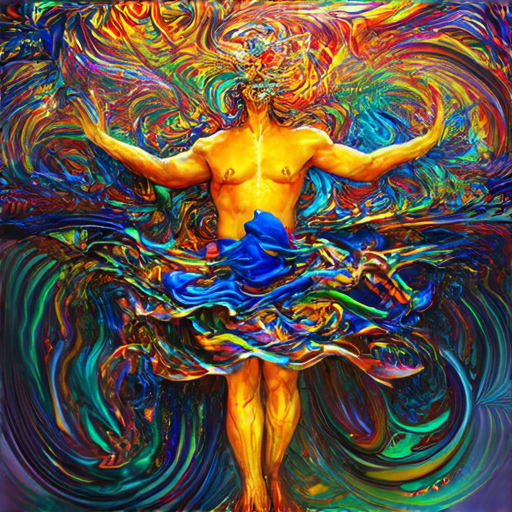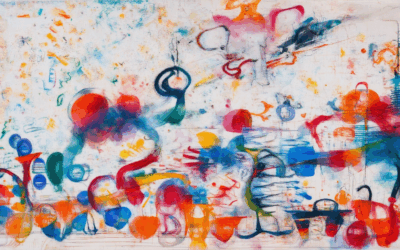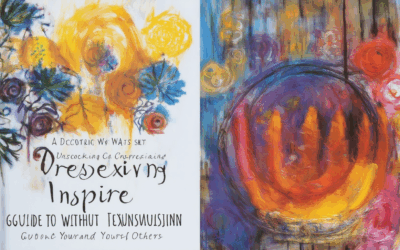The art of crafting compelling narratives and navigating the intricate path of creation goes hand in hand, offering a powerful synergy that fuels innovation and inspiration. Creative process and storytelling are not just separate entities but complementary forces that drive progress and resonate deeply with audiences. Whether you’re an aspiring writer, a creative professional, or someone looking to unlock new possibilities, understanding the interplay between these two elements is essential. This guide delves into the core components and strategies that define both the creative process and storytelling, providing actionable insights and practical examples to help you master these transformative tools. From dissecting the stages of creation to unraveling the elements that make stories memorable, this exploration will shed light on how to harness the power of creativity and storytelling to achieve your goals.

The Five Stages of the Creative Process
The creative process is a dynamic journey marked by distinct phases that guide individuals from initial inspiration to a completed creation. Understanding these stages can help unlock productivity and innovation. Below, we explore the five primary stages of the creative process, along with insights to enhance your approach.1. **Preparation** The foundation of creativity lies in preparation. During this stage, you gather inspiration, research your topic, and plan your approach. Preparation involves setting clear goals, exploring relevant materials, and organizing your workspace. Tools like sketchbooks, mind maps, or research databases can be invaluable during this phase. By grounding your ideas in reality, you lay the groundwork for meaningful creation.2. **Incubation** Incubation is the phase where ideas simmer below conscious awareness. This is often described as the “incubation” period, where your brain processes information unconsciously. Techniques like taking regular walks, journaling, or engaging in hobbies can stimulate creativity. During this stage, trust your intuition and allow your thoughts to wander freely, knowing that meaningful ideas may emerge unexpectedly.3. **Insight** Insight is the moment of clarity when ideas suddenly crystallize. This stage is characterized by a flash of understanding or realization, often accompanied by excitement. Insight can occur during activities like meditation, problem-solving, or simply relaxing. Recognizing and acting on this moment is crucial, as it marks the transition from idea generation to active creation.4. **Evaluation** After generating ideas, it’s essential to evaluate their potential. This stage involves assessing the viability, feasibility, and impact of your ideas. Consider factors like functionality, aesthetics, and alignment with your goals. Feedback from others or research can provide valuable perspective, helping you refine your concepts before moving forward.5. **Elaboration** Elaboration is the final stage where ideas are developed into a tangible form. This involves refining concepts, experimenting with techniques, and bringing your vision to life. Whether it’s drafting a story, designing a product, or completing a project, this phase requires dedication and attention to detail. Embrace iteration, as refining your work often leads to improved outcomes.By navigating these stages thoughtfully, you can channel your creativity effectively, producing work that resonates with others. Remember, inspiration can strike anywhere, so keep your eyes open and your mind curious. For further exploration of creative techniques, visit [Patrick Mettraux](https://patrickmettraux.com/) and discover actionable strategies to fuel your creativity.
What are the 5 Cs of storytelling?
The 5 Cs of storytelling are essential elements that help structure and enhance the narrative. Here’s a breakdown:1. **Conflict**: Every great story begins with a conflict or problem that needs to be solved. This creates tension and drives the plot forward.2. **Character**: Well-developed characters are the heart of any story. They must be relatable, have depth, and undergo growth or transformation.3. **Cause**: The cause is the underlying reason behind the conflict. It gives the story purpose and direction.4. **Context**: Context provides the setting and background information that helps readers understand the story better.5. **Consequence**: The consequence is the outcome of the story’s events. It ties everything together and shows how the characters and conflicts resolve.These elements work together to create an engaging, meaningful, and memorable story.
How Does Storytelling Support Creativity?
Storytelling is a powerful tool that fosters creativity by engaging our minds in ways that go beyond mere logical thinking. Here’s how storytelling contributes to creativity:
Cognitive Development
Storytelling exercises the brain by encouraging us to imagine alternative realities and possibilities. By visualizing scenes, developing characters, and crafting narratives, we enhance our ability to think creatively. This mental exercise strengthens neural connections associated with innovation and idea generation.
Emotional Connection
Stories resonate with our emotions, creating a deeper connection with the subject matter. This emotional engagement allows us to explore complex feelings and perspectives, which can inspire unique solutions to problems. When we empathize with characters or situations in a story, we often gain fresh insights that fuel creative thinking.
Problem-Solving Skills
Storytelling helps develop critical thinking and problem-solving abilities. By analyzing plot twists, motivations, and outcomes in stories, we learn to approach challenges from different angles. This skill translates well into real-life scenarios, enabling us to think outside the box and find innovative solutions.
Collaborative Creativity
Sharing stories encourages collaboration and sparks collective creativity. When people share their narratives, they inspire each other, leading to new ideas and combinations of concepts. This collaborative process mirrors how teams can work together to achieve extraordinary results, blending diverse perspectives to create something truly unique.
Cultural Preservation and Innovation
Storytelling plays a vital role in preserving culture while also driving innovation. By exploring historical tales, cultural traditions, and societal evolution, we gain insights that inspire modern creativity. These stories often contain lessons and wisdom that can be reinterpreted in innovative ways, leading to fresh approaches in various fields.
By embracing storytelling, we unlock our imaginations and open doors to endless possibilities. Whether through personal anecdotes, fictional tales, or historical narratives, storytelling is a cornerstone of human creativity, helping us connect, grow, and innovate.
Explore more creative insights on Patrick Mettraux.
What is Creative Storytelling?
Creative storytelling is the art of crafting and sharing tales that captivate and inspire audiences through words, images, or performances. It’s a universal human tradition that transcends boundaries, allowing us to connect emotionally and explore new perspectives.
Key Elements of Creative Storytelling
- Imagination: The foundation of storytelling, where unique ideas and innovative concepts take shape.
- Engagement: Captivating listeners or viewers through compelling narratives and emotional resonance.
- Expression: A medium-free method of conveying thoughts, feelings, and experiences.
Purpose of Creative Storytelling
Creative storytelling serves various purposes, including:
- Inspiration: Igniting imagination and motivating change.
- Education: Teaching lessons, history, and values through relatable stories.
- Entertainment: Providing escape and joy through immersive tales.
- Connection: Bridging cultural gaps and fostering empathy across diverse audiences.
The Role of Creatives
Creatives, including writers, artists, and performers, play a vital role in shaping societal norms, challenging conventions, and driving innovation. Their stories reflect individual perspectives and collective experiences, enriching our global tapestry.
Examples of Creative Storytelling
From oral traditions to modern digital formats, creative storytelling can be found in:
- Visual Arts: Paintings, sculptures, and installations that tell a visual narrative.
- Music and Film: Soundtracks and movies that immerse viewers in imaginary worlds.
- Written Word: Novels, poetry, and scripts that transport readers to different realities.
Dance and Theatre: Performances that convey stories through movement and acting.
Resources for Further Exploration
If you’re interested in learning more about creative storytelling, explore these platforms and blogs:
- Patrick Mettraux : A blog dedicated to exploring creativity through storytelling and artistic reflection.
- 99U : A platform offering insights into storytelling, design, and creativity.
- Medium Stories : A curated collection of compelling narrative pieces by creators worldwide.
What Are the 4 Types of Storytelling?
Storytelling is a powerful tool used across various fields to convey ideas, emotions, and experiences. Below are the four primary types of storytelling:
Narrative Storytelling
This is the most common form of storytelling, often used in literature, film, and theater. It involves a sequence of events that present a clear beginning, middle, and end. Narrative storytelling relies on chronological order and character development to engage the audience.
Dramatic Storytelling
Dramatic storytelling is often used in plays, live performances, and screenwriting. It focuses on dialogue, actions, and emotional expressions to create a dynamic and immersive experience. This type of storytelling relies heavily on body language and tone to convey meaning.
Visual Storytelling
Visual storytelling uses images, graphics, or videos to communicate ideas. This method is commonly employed in marketing, presentations, and digital media. Visuals help to break down complex information and make it more accessible to the audience.
Conversational Storytelling
Conversational storytelling mimics everyday speech and is often used in speeches, podcasts, or casual conversations. It emphasizes relatability and authenticity, making it ideal for sharing personal experiences or opinions. This type of storytelling feels natural and easy to follow.
Each type of storytelling serves a unique purpose and can be adapted to different contexts and audiences. Whether you’re crafting a compelling narrative, delivering a presentation, or sharing a personal story, choosing the right style will help you connect with your audience effectively.

The Four Ps of Storytelling
The Four Ps of storytelling is a framework used to analyze and create engaging narratives. While traditionally used in marketing, it can be adapted to understand storytelling techniques:
- P – Plot : The sequence of events that make up the story, including the beginning, middle, and end.
- P – Protagonist : The central character around whom the story revolves.
- P – Perspective : The viewpoint from which the story is told, such as first-person, third-person, or omniscient.
- P – Purpose : The underlying theme or message of the story.
Mastering these elements allows storytellers to craft compelling and memorable narratives that resonate with audiences.




0 Comments